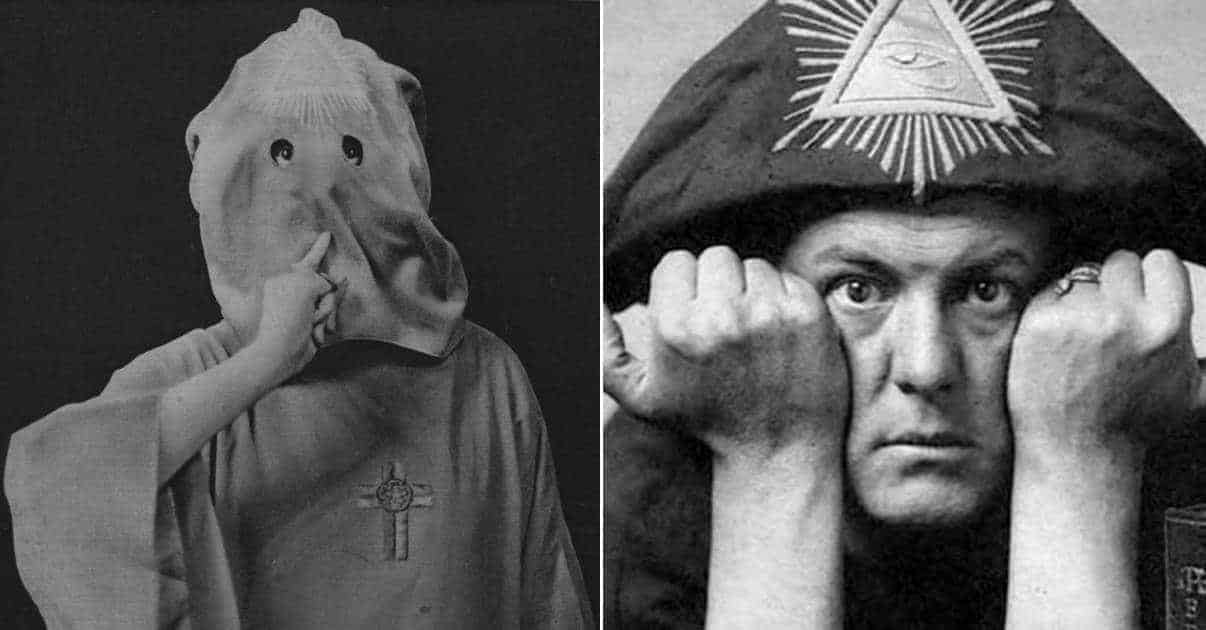Many of our most revered and respected historical figures were enigmatic philosophers with an array of seemingly unrelated hobbies. Aleister Crowley, however, is the epitome of the enigmatic thinker with dichotomous skill. While not free from controversy, Crowley did inspire mystics, entertainers, and performers to think outside the box and create their own special blend of magic. Crowley fully infiltrated the people’s hearts and minds of the 20th century, planting seeds of conspiracy regarding secret societies and dark magics. Who has not heard at least whispers of the all powerful Illuminati or evil cabal of puppet masters pulling the strings of our most famous politicians? We owe all our most paranoid thoughts to Aleister Crowley.
A lewd and provocative man, Crowley was know for his ritual use of sex magick, prolific hiring of both male and female prostitutes, consuming various bodily fluids, and dubbing his lovers as his “whores of Babylon”; he was a divisive figure that either impassioned those around him with a sense of freedom, or enraged his more conservative contemporaries. Governments deported him while other governments hired him to infiltrate beyond the enemy lines. His poetry, while not critically successful, led to many praising him for his sexuality and obscene and realistic depictions of human sexuality.
Aleister Crowley was born Edward Alexander Crowley on October 12th, 1875 in Warwickshire, England. His family were a wealthy Plymoth Brethern family, however, Crowley rejected the idea of Christianity entirely. Instead, Crowley favored Western Esotericism that inspired his passions throughout his life. Multi-talented, he pursued an array of hobbies and interests throughout his life, including mysticism, poetry, painting, mountain climbing, becoming a novelist, and founding a church. It is no wonder why so many eccentric, popular personalities such as David Leary and The Beatles were so fascinated by him.
Here are the most intriguing, and sometimes frightening, facts about the devilish Aleister Crowley…

Crowley Founded A Religion
Developed in the early 1900s by Crowley, the religion of Thelema was based upon Crowley’s own spiritual experiences and obsession with ancient Egyptian culture and religion. In 1904, Crowley and his wife Rose Edith Kelly traveled to Cairo, Egypt. Rose and Aleister believed themselves to be a prince and princess and rented an apartment so they could begin studying and practicing various forms of Eastern mysticism. Crowley’s wife would often become enraptured by meditation to the point of delirium, making outlandish claims that the Egyptian god Horus was in fact watching Crowley closely.
By April of that year, Crowley claimed he was frequently being visited by Horus’s messenger Aiwass. Through these communications, Crowley wrote down everything Aiwass spoke of. This text later became The Book of the Law, or Liber AL vel Legis, the text that Thelema was founded on. The book stated that Crowley was a prophet sent to the earth to bring the populations into a new Aeon. This new Aeon was said to bring about a new moral law to man, and the official Law of Thelema: “Do what thou wilt shall be the whole of the Law. Love is the law, love under will”.
According to Aiwass, Crowley was to steal an important artifact from an Egyptian museum, create his own island, and isolate himself on the island transcribing The Book of the Law into all the languages of the world. Crowley, however, resented the book for many years and even went against what he was supposedly instructed to do. Instead, he sent copies of the manuscript to various mystics and occult leaders who would then disperse its copies to those interested in the ways of Thelema. After the manuscript was passed along to others, Crowley largely ignored the book he had grown to resent.
Thelema itself is based on many practices, including yoga, Eastern and Western mysticism, particularly the Qabalah, and occultism. Thelema is a highly ritualized religion, supporting the use of ritual magicks. Thelema stresses the importance of free will and finding out what your individual purpose on Earth is. Crowley’s founding of Thelema is thought to have started the modern wave of Wicca and occultism that we know today, including Anton LeVey’s LaVeyan Satanism. Although the numbers are not large, this religion does continue to have a steady following of both Thelemites (those who practice Thelema), or those who integrate Thelema into their occultism.

